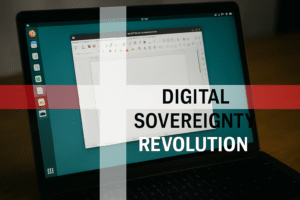Table of Contents
ToggleThe Hidden Truth Behind UPI’s “Free” Model: Why MDR is Making a Comeback
MDR Reintroduction – India’s Unified Payments Interface (UPI) revolutionized digital payments, making transactions seamless and free for millions. But a seismic shift looms: the government is considering reintroducing Merchant Discount Rates (MDR) on UPI and RuPay transactions for large merchants. Let’s unpack the history, motives, and potential fallout of this controversial move.
UPI’s Rise & The MDR Subsidy Saga
Launched in 2016 by the National Payments Corporation of India (NPCI), UPI aimed to democratize digital payments. By 2019, the government introduced a MDR subsidy, absorbing transaction costs to incentivize adoption. Banks and payment processors were reimbursed, ensuring UPI remained free for merchants and users.
By 2023, UPI had transformed India into the global leader in real-time payments, processing 12,930 crore transactions in 2023 alone—84% of all electronic transactions in the country. Brazil, its closest competitor, trailed far behind. This dominance, however, came at a cost: the government initially spent over ₹2,600 crore annually on MDR subsidies. But in a dramatic turn, the 2024 Union Budget slashed this subsidy to just ₹437 crore (from ₹3,500 crore in 2023), even as UPI’s transaction value surged to ₹21.96 lakh crore in February 2024, up from ₹18.28 lakh crore a year prior.
The timing is critical. The RBI’s Digital Payments Awareness Week (March 10–16) celebrates India’s digital leap, yet fintechs and banks now grapple with thinning margins amid explosive growth.
Why Reintroduce MDR? The Government’s Dilemma
Centre mulls bringing back MDR charges on UPI and RuPay transactions if your annual turnover exceeds... https://t.co/DnCVPMjIMI
— Business Today (@business_today) March 11, 2025
Unsustainable Subsidies: The RBI flagged fiscal strain, noting subsidies grew 4x since 2020.
Banking Sector Pressure: Banks bear UPI’s operational costs (₹2-3 per transaction) without revenue, hurting profitability.
Leveling the Playing Field: Card networks (Visa/Mastercard) charge 1-3% MDR, while UPI’s free model distorted competition.
Funding Innovation: Revenue from MDR could fund infrastructure upgrades and fraud prevention.
A senior Finance Ministry official stated: “The goal isn’t to tax users but to create a sustainable ecosystem where banks and fintechs can thrive.”
Tiered MDR: A Fair Compromise or a Burden?
The proposed tiered pricing system exempts small merchants (turnover <₹40 lakh) but imposes graded fees on larger businesses:
Small merchants: 0% MDR (status quo)
Mid-sized: 0.25–0.5%
Large enterprises: 0.75–1%
Pros:
Protects 80% of UPI merchants (mostly SMEs) from new costs.
Generates ₹1,500–2,000 crore annually from big players like Amazon and Reliance.
Cons:
Large merchants may hike prices to offset fees, indirectly affecting consumers.
Compliance complexity for businesses with hybrid turnover.
Impact on Businesses & Users: The Ripple Effect
Small Businesses: Unaffected, but may face pressure if platforms like Paytm pass on gateway charges.
Large Merchants: ₹1 lakh/month in MDR for ₹1 crore turnover. Likely to absorb costs initially but could revise pricing strategies.
Users: No direct charges, but hidden inflation risks.
Fintechs & Banks: New revenue streams to improve tech and security.
A Mumbai-based retailer shared: “If MDR returns, I’ll promote cash discounts again. Every rupee matters.”
Global Precedents: Lessons for India
Countries like Indonesia and Brazil mandate tiered MDR to balance innovation and profitability. Indonesia caps fees at 0.7% for large merchants, ensuring SMEs stay competitive. India’s model mirrors this, but execution will decide its success.
The Road Ahead: Challenges & Opportunities
Fraud Management: Banks must reinvest MDR revenue into AI-driven security.
Political Pushback: Opposition parties may frame this as a “tax on digital India.”
Adoption Slowdown: Post-demonetization, India achieved 80% digital penetration. Will fees reverse this trend?
A Necessary Evil or a Strategic Misstep?
Launched in 2016 by the National Payments Corporation of India (NPCI), UPI aimed to democratize digital payments. By 2019, the government introduced a MDR subsidy, absorbing transaction costs to incentivize adoption. Banks and payment processors were reimbursed, ensuring UPI remained free for merchants and users.
By 2023, UPI had transformed India into the global leader in real-time payments, processing 12,930 crore transactions in 2023 alone—84% of all electronic transactions in the country. Brazil, its closest competitor, trailed far behind. This dominance, however, came at a cost: the government initially spent over ₹2,600 crore annually on MDR subsidies. But in a dramatic turn, the 2024 Union Budget slashed this subsidy to just ₹437 crore (from ₹3,500 crore in 2023), even as UPI’s transaction value surged to ₹21.96 lakh crore in February 2024, up from ₹18.28 lakh crore a year prior.
The timing is critical. The RBI’s Digital Payments Awareness Week (March 10–16) celebrates India’s digital leap, yet fintechs and banks now grapple with thinning margins amid explosive growth.

Jugaad on Two Wheels: The Hilarious Bike Parcel Hack in Karnataka
The Great Karnataka Bike Parcel Hack: A Jugaad Masterclass #RapidoParcel: In a creative yet controversial move, ride-hailing platform Rapido has found a way around Karnataka’s

Denmark’s Digital Sovereignty Revolution: Linux and LibreOffice Lead the Way
Introduction to Denmark’s Bold Move In June 2025, Denmark’s Ministry of Digital Affairs made headlines by embracing digital sovereignty, ditching Microsoft Windows and Office 365

🏏Sports as a Business Strategy: Insights from Vijay Mallya’s RCB Ownership
🧠 Sports as a Business Strategy (Tool) In modern business, few platforms offer better engagement and emotional connection than sports. From football clubs in Europe

🙏 Apologies in Leadership: Vijay Mallya Public Apology
🧠 Introduction: The Role of Apologies in Leadership In the corporate world, apologies aren’t signs of weakness—they’re strategic acts of leadership. When made with sincerity

Audiobook Production Costs: Navigating Recording Artists, Studio Expenses, and AI’s Impact
The audiobook industry is booming, with over 130 million listeners in the U.S. alone in 2021 and a growing global appetite for audio content. Producing

Media Trial of Vijay Mallya: How Public Perception Shaped Vijay Mallya’s Legacy
Introduction: Media’s Influence on Business Narratives In today’s hyper-connected world, media narratives can make or break a business reputation. For Vijay Mallya, once known as

